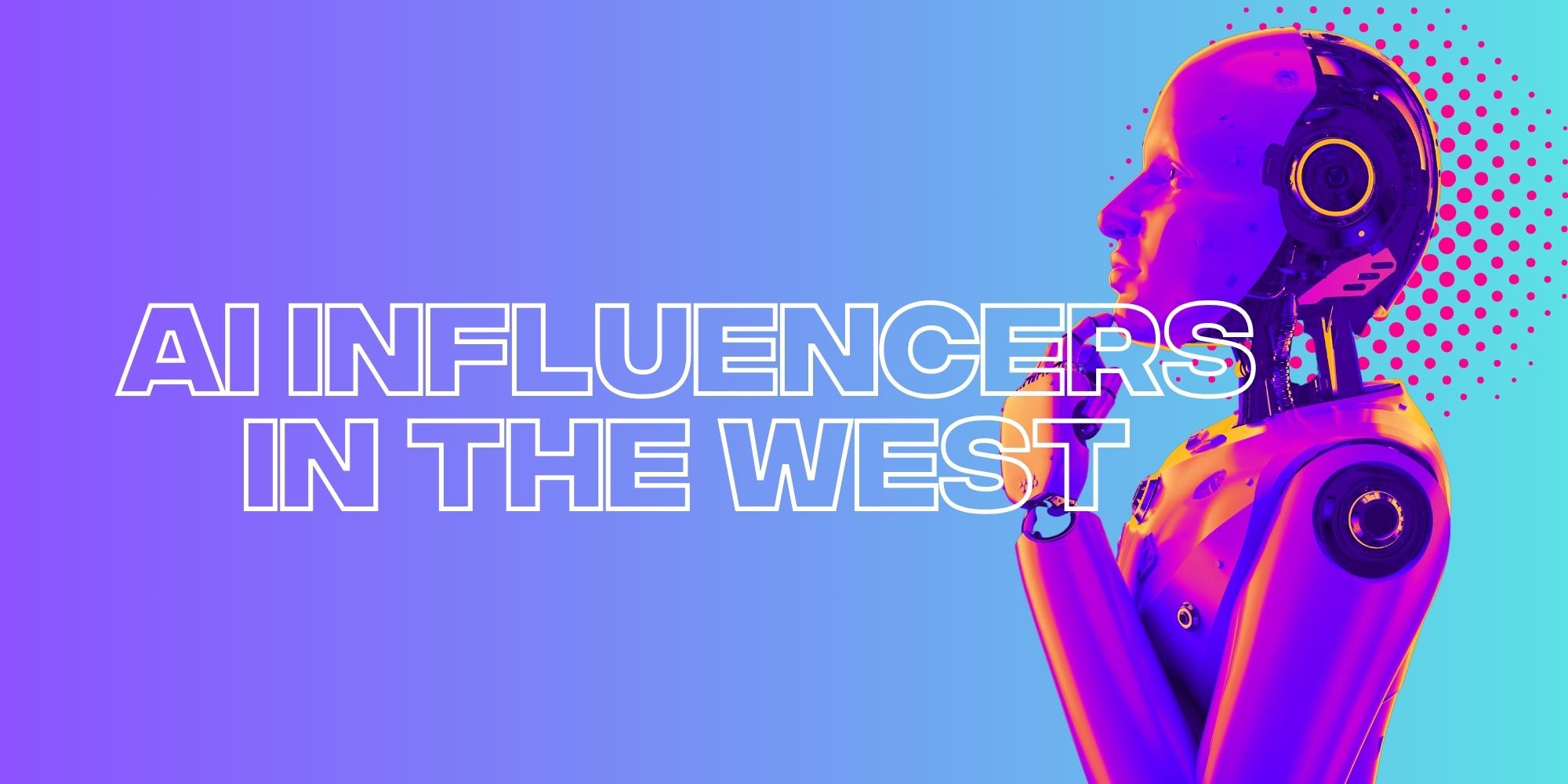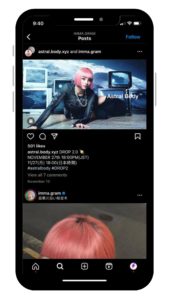Do AI Influencers Have What It Takes To Make It In The West?
Nov 30, 2023
Influencer News

Ever get the feeling that the creators on your feed are too good to be true?
Well, there’s a good chance they are. AI influencers are becoming more and more popular on social media, filling up our feeds with eerily-smooth skin and uncanny smiles.
Whilst in the West these influencers may seem like an up-and-coming trend, they are an established part of social media elsewhere. In China in particular, these influencers have become a steadfast part of live streaming ecommerce culture.
With the popularity of AI influencers growing day by day, everyone is asking the same question; do they have what it takes to crack the Western market?
Ultimately, a future where AI influencers rule our screens does not seem that far fetched. Currently, consumers are responding well to them and seem ready to accept this new form of media.
However, for these influencers to properly crack the Western market, they must find a way to establish genuine, proper human connection with their audiences. A goal that even the most successful human influencers struggle to achieve.
The basics
Before we get ahead of ourselves, let’s lay down the basics.
Put simply, AI influencers are AI generated characters. These influencers can look or act any which way, with some embodying humans and others, animals.
They use complicated algorithms and machine learning to act almost exactly the same as their human counterparts. They are able to interact with others on social media, host lives, engage with products, and more. The technology has become so advanced, that AI influencers can now have unique relationships with their followers through comments and live streams.
Day by day, more brands decide to work with these influencers, and it’s not difficult to see why.
They provide a wide range of benefits, such as cost-effectiveness, lack of human limitations and increased availability. Moreover, brands are able to control every aspect of the AI influencer that they work with. This means no accidental slip ups or silly mistakes that reflect poorly on the brand. Finally, they use data analysis to make certain their behaviour produces the best results. As in, they are able to adjust their approach on the go to meet brand goals.
Within the marketing community, AI influencers are becoming increasingly more accepted. A recent study found that 59.8% marketers planned to use AI influencers in their upcoming campaigns. Furthermore, of those that had already worked with AI influencers, 49.3% had a very positive experience.

The popularity of AI influencers in the East
As mentioned previously, AI influencers have found supreme success in the Chinese market. In particular, these avatars have found a place in the live stream ecommerce industry.
Live stream e-commerce is a massively popular industry in China, with more than 400,000 livestreamers selling products on platforms such as WeChat and Douyin. Live streaming influencers have become mega celebrities in their own right, with thousands of users tuning in to simply watch their favourite influencer live. For example, Li Jiaqi, also known as the Lipstick King, has become so influential that it is rumoured he was the cause of up to one third of all Singles’ Day sales in 2022.
However, as with any influencer, these mega-celebrities come with drawbacks. A large number of these influencers have been involved in scandals over the past years, tarnishing both their reputation and that of the brands they are associated with, diminishing future prospects.
Moreover, there is the human element of it all. Influencers are unable to livestream 24/7 and are limited to how many brands they can work with at once.
This supreme popularity of live streaming, combined with the natural limitations of human influencers, ultimately led to the birth of AI influencer live stream hosts; just rolls off the tongue.
Starting late in 2022, eerily-convincing deep fake avatars started to make their way out of tech companies in China and onto live streaming platforms. These avatars have quickly become popular, due to their ability to live stream 24/7, interact with audiences and successfully promote products. In fact, AI influencer livestreamers have become so popular that they caused four times more broadcasting rooms to open in the first 10 minutes of Singles’ Day this year than in 2022.
The biggest advantage that AI influencers provide for brands is their ability to constantly live stream. Maintaining a constant presence online is essential for survival in the competitive digital landscape. AI influencers allow brands to maximise every minute of the day.

Evidence of AI influencers in Western marketing today
AI influencers have proven incredibly efficient and popular with audiences across the world. So why are we yet to see them in the same capacity in the West?
Whilst these influencers are yet to truly crack the Western market, they have been inching their way in for several years now. We have been seeing a steady increase in the number of brands working with AI influencers on social media and beyond.
The fashion industry, for example, has seen many brands work with AI influencers. Spanish modelling agency The Clueless famously created their own AI model, Aitana Lopez, as they were tired of working with human influencers. Lopez earns up to 10,000 euros per month through brand partnerships, and has garnered an extensive social media following.

Another great example is Superplastic. The brand has recently announced that they will be turning their plastic figurines into AI celebrities. If all goes to plan, Superplastic’s most beloved characters will be brought to life through music, clothing and even video games.
Beyond your classic examples of AI influencers, AI has been worming its way into social media trends in the West. TikTok, in particular, has shown that Western consumers are ready to include AI in their everyday usage of social media. Trends such as users using AI to edit popular films like Harry Potter, or the wave of users engaging with AI to join in on the uncanny valley trend, show that there is room for AI in the West.

Do these influencers have a future in the West?
So, are AI influencers going to crack it in the West? All the research points to yes. When asked what they predict for 2024 in marketing, an overwhelming majority of experts believe that an increase in leveraging these influencers will occur.
AI influencers have proven elsewhere that they can be incredibly successful. Their supreme popularity in China shows that consumers are ready to accept these new creators as part of their social media experience.
Despite the fact that live stream ecommerce – the area that AI influencers are most successful in – has failed to take off in the West, there is still a place for them in the market. As seen through the cases of popular AI influencers such as Lil Miquela, as well as social media trends that centre themselves around AI, Western consumers do have a desire for this type of media.
A favourite critique of these influencers is their inability to foster human connection. Modern consumer’s have shown that they desire authenticity above all else from brands and influencers alike; how can a computer generated image come across as genuine?
Surprisingly easy, it seems. AI influencers have proven more successful at connecting with audiences than their human counterparts, with their average engagement rate sitting at 2.84%. This is in contrast to regular influencers, whose average engagement rate rests at 1.72%.
This incredible ability to engage with audiences is most likely due to AI’s ability to accurately understand audience behaviour and preferences. Through data analysis, AI influencers are able to tap into the most effective messaging, hashtags, content formats, and more, to maximise audience engagement.
Yet, consumers are less likely to trust AI influencers than human influencers. Studies have found that consumers view these influencers as less trustworthy than human influencers and feel a greater social-psychological distance from them.
Bridging this gap, and encouraging Western consumers to trust AI influencers, will be a tall task indeed.
On the brand side of things, as previously mentioned, studies show that marketers are continuously impressed and satisfied with the AI influencer, due to their cost effectiveness, ability to work 24/7, and controllability. As long as consumers continue to respond well to them, it is highly unlikely that brands will give up on this marketing gold mine.

Ultimately, it seems that we are standing on the precipice of an AI influencer-filled future. Brands are ready to engage with this new form of influencer marketing and meet consumer demands. For those looking to dive in and take the AI horse by the reins, be sure to choose wisely. Whether or not to engage with AI influencers is not the question, but how to ensure they properly reflect your brand and align with your values, is.
For AI influencers to properly crack the Western market, they must find a way to properly earn consumer trust. Establishing authenticity and fostering genuine human connection will push the doors fully open to Western consumers.
Our influencer marketing agency and social agency are located worldwide, with our agency network based in the USA, UK, UAE and China.
If you want to find industry insights, visit our influencer marketing and social media blogs.
@ Socially Powerful
Social And Influencer Marketing News + Insights
Get in touch
We'll show you how to start powerful conversation, drive social engagement, build your brand, hit sales targets or meet other goals you have, wherever you are in the world.
Work with us





